Thu, 15 Jan 2015 . Last updated Mon, 01 Jun 2015 14:18


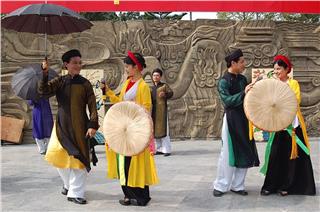
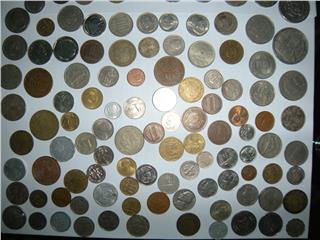

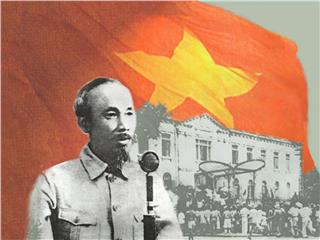
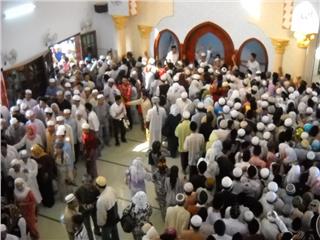

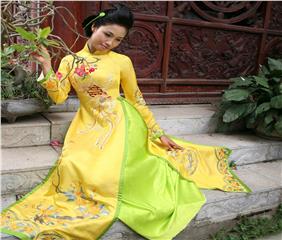
The cult of fecundity has been practiced in many countries worldwide for a long time. Many archeological sites and scientific documents say that this is the most primitive cult of humans at the dawn of history when science was not developed yet. The cult of fecundity appeared long ago in Vietnam, and has become part of people’s spiritual life. This is proven through artifacts found in different periods of time, unique carvings in ancient religious buildings, and rituals in folk festivals. Up to now the cult of fecundity has still been an unanswered question that researchers have tried hard to answer.
Where does the cult of fecundity come from? When was it practiced for the first time? For what was it founded? Is it true that the cult of fecundity is only practiced in countries with wet rice cultivation? Is it popular in other countries as well? Up to now these questions have remained unanswered.
The cult of fecundity played a very important part in Vietnamese ancients’ spiritual life. It explains why the bronze drum, the symbol of power, is carved with images of the cult of fecundity. People in the past believed that natural and human spiritual energy could be transmitted into domestic animals and crop plants. Thus, the cult of fecundity and related rituals were developed in the country. In many countries, male and female sex organs or genitals are characterized by linga and yoni. In Vietnam, linga and yoni are called “no” and “nuong”.
In Vietnam, the cult of fecundity has left many traces. In a recent survey conducted in Len Bo Mountain, An Son district, Nghe An province, researchers have found an ancient stone block carved with humans and unique figures. According to scientists, the stone block is closely associated with the cult of fecundity. It is among the first vestiges to be found related to the cult. This is Dao Thinh bronze jar of Dong Son culture. It proves skilled bronze casting of Vietnamese people living thousands of years ago. However, we are impressed most by decoration items on the jar. Four bronze couples having sex, in which women are lying under men, and their genitals are bigger than normal ones.
Dong Son bronze drums of different sizes cast in different periods of time are decorated with images of animal mating and human sexual intercourse which are found on the surface, the body and the support of the drum. Furthermore, images related to fecundity are found on the body of the jar and the drum, such as a herd of deer running with a couple of deer (a male and a female) followed by other couples, a herd of oxen is also intentionally arranged similarly to the herd of deer, people (male and female) pounding rice, people dancing and so on.
In this way, we can see that images closely related to fecundity on Dao Thinh jar, which contined grains, show ancient people’s wish of bumper crops. They believed that acts of copulation would wake seeds up. Yin-Yang balance would make seeds sprout rapidly and stay lush. In the middle of the surface of the bronze drum, the symbol of power of people in the past is the sun whose rays represent male genitals, between the two rays is a leaf-shaped blade with a slot in the middle symbolizes female genitals. What’s more, in pictures of Dong Son culture that have been kept up to now, we can see images of couples pounding rice with pestle and mortars, representing the cult of fecundity.
During the Chinese domination period, the cult of stone (sterile element with masculinity) and the cult of tree (fertile element with femininity) appeared. Legend says that two opposite elements were worshipped because when they combined with each other, they brought about fecundity. Dau pagoda is the mixture of the cult of fecundity, the cult of stone, the cult of tree, the worship of Mother Goddess and Buddhism. However, the worship of Mother Goddess dominates that combination, proven through the legend of Man Nuong (Buddhist Mother Goddess). Through the statues of “Tu Phap” (four Buddhist Goddesses) and Thach Quang Phat, it can be said that the cult of fecundity changed when it contacted with exotic religions introduced into Vietnam during the Chinese domination period.
In the Ly dynasty, Buddhism flourished with the domination of liberal thinking. Buddhism in this dynasty appreciated sterilization which was believed to enlighten humans. Therefore, the cult of fecundity was made light in the Ly dynasty. Meanwhile, the stone pillar in Dam pagoda in Bac Ninh obviously looks like a linga. The pillar is carved with a couple of winding dragons typical of fine arts in the Ly dynasty. Remarkably, their entwined tails show Yin-Yang balance. In this period of time, Dam pagoda was recognized as a national pagoda. Yet the pillar in the shape of a linga in the pagoda proves the existence of the cult of fecundity in this period.
According to historical documents, King Tran Nhan Tong, who defeated Nguyen Mong troops twice, gave up the throne and founded the Truc Lam Zen school. He traveled everywhere to decrease the number of gods worshipped in temples of the cult of fecundity. It’s possibly the reason why no artifacts of the Tran dynasty that re related to the cult of fecundity are found. The cult of fecundity developed well in the 16th century after the collapse of the Later Le dynasty and the governance of the Mac dynasty, opening centuries of disturbances.
In this period of time, the worship of village tutelary god grew popular. Special attention was paid to the communal house, proving through the abundance of elaborate carvings and sculptures in this religious building. Also in this period of time, the cult of fecundity witnessed flourishing development in all aspects of society. The cult appeared brilliant in carvings and sculptures in the communal house. It can be said that the cult of fecundity was found abundantly in language, objects and art in the 17th – 18th century.
Phu Lao communal house in Bac Giang still keeps a large number of carvings dating back to the 17th when the cult of fecundity came back to its most brilliant time. The building doesn’t stand out because of its imposingness, but thanks to unique wood carvings. Its rafters surprise us by carvings depicting vividly scenes of life, in which images imbued with the cult of fecundity like naked men and women and acts of copulation are carved elaborately and skillfully.
Researchers think that human desires are reflected most faithfully through carvings in Phu Lao communal house. The communal house is the most sacred building of the village. Thus, decoration items in the communal house must have been made intentionally. These carvings were made based on ideas and desires of the whole community.
First communal houses were built at the same time with the strong development of Confucianism which consists of Three moral bonds, Five constant virtues, Three subjects and Four virtues of women, especially the with for fertility. Carvings of boys and girls playing together in Phu Lao communal house and other images of the cult of fecundity carry the wish for abundance and fertility of ancient Vietnamese people. It’s the wish of the whole community.
A corner of Chu Quyen communal house in former Ha Tay in the 17th century was carved with images of girls in traditional costumes. Scenes of daily activities are used to decorate the space for community activities. It’s the most remarkable feature of communal house sculpture in this period of time. Similarly, in the sanctuary of Hung Loc communal house, Nghia Hung, Nam Dinh, among carvings of dragons, there are carvings of boys and girls playing together with four famous smiles. All are to reflect people’s desires.
The cult of fecundity not only has been practiced in the Red River delta where people mainly live on crops and husbandry but also develops well across the country. Long the narrow strip land in the Central region, for thousands of years, Cham ethnic people have created a vibrant culture based on the mixture of Hinduism, Buddhism and native culture. The cult of fecundity of Cham ethnic people is expressed through the worship of linga (male sex organs) and yoni (female sex organs). The two objects are often coupled. The cult is normally found in Cham towers dating back to the 10th century.
Legend has it that linga, male genital, is Shiva, one of the three supreme Hindu gods. He is the symbol of masculinity and creativity. Yoni, female genital, is Uma, Shiva’s wife. She is the symbol of femininity. Linga and Yoni are divided into 3 parts. The lower part has square-shaped cross section, representing Earth and Yin. The central part has octagonal across section, representing Human and Ying-Yang balance.
In the Central Highlands where the locals have long lived on wild mountains and forests, nature is a part of their blood and flesh. That’s why the cult of fecundity is of great significance and scared to them. With the thought that death is the beginning of a new life, the cult of fecundity of people in the Central Highlands is expressed clearly through statues around their charnel-house with the hope that rebirth will come soon.
The life of wet rice farmers in Vietnam is mainly sustained by crops. Thus, wishes for bumper crops are the firm foundation for the development of the cult of fecundity. Unlike people in other countries in the world, Vietnamese people are partly influenced by the philosophy of Yin-Yang balance which is seen as the source of development. What’s more, they are influenced by ideology of some exotic religions like Buddhism, Taoism and Confucianism after a long-term interaction. That explains why fecundity is not only a cult, but also found abundantly in rituals and games in folk festivals.
The cult is clearly depicted in a festival called “Linh tinh tinh phoc” in Lam Thao, Phu Tho in the first lunar month every year. Rituals of the festival to pray for fertility are conducted mid night. “No” and “Nuong”, symbols of genitals are made of wood and painted in red. The two objects are worshipped in Tro temple. They are given to a selected couple, in which the man wear a loin-cloth and the woman wears a brassiere and skirt. After a verbal command “Linh tinh tinh phoc” the man sticks “No” through “Nuong”. If “No” is successfully stuck through “Nuong” three times, the weather will be beautiful all year round and local people will harvest bumper crops.
The cult of fecundity is expressed in different ways. But all are to pray for a full life and fecundity for things. It’s part of human life with many secrets and desires to live forever. It can be said that despite historical ups and downs, the cult of fecundity remains a dispensable part of Vietnamese folk culture.
Source: VTC10 - NETVIET

 Đặt vé máy bay cho người Việt?
Bấm vào đây
Đặt vé máy bay cho người Việt?
Bấm vào đây
Our service uses cookies for technical, analytical and marketing purposes. See our Cookie và Privacy policies for more information. If you agree to this, just keep browsing.


